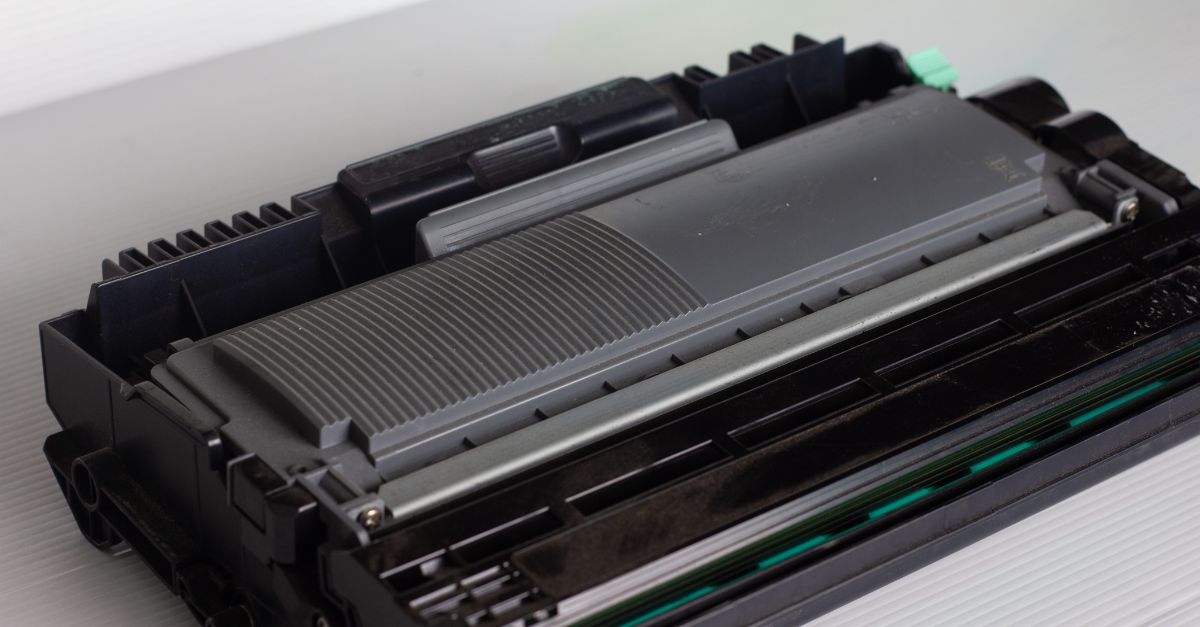Quelle est la différence entre un toner d'imprimante et un tambour ?

Les cartouches de toner sont un élément essentiel de toute imprimante laser, et le choix entre une cartouche tout-en-un à composant unique et des cartouches à deux composants peut avoir un impact significatif sur votre expérience d'impression. Si vous ne connaissez pas les tenants et les aboutissants des cartouches de toner, vous ne savez peut-être même pas par où commencer. Dans cet article de blog, nous allons explorer la composition d'une cartouche de toner, en commençant par les deux parties qui les séparent, le toner et le tambour .Nous examinerons ensuite les différences entre les cartouches de toner à composant unique et les cartouches de toner à deux composants, et nous expliquerons pourquoi les cartouches à composant unique de HP constituent le meilleur choix....
Unité tambour vs. Toner
Avant de nous pencher sur les différences entre les cartouches monocomposantes et les cartouches bicomposantes, entrons dans le vif du sujet et comprenons les éléments qui composent une cartouche de toner. Bien que vous puissiez penser qu'une cartouche de toner est une unité solide, chacune d'entre elles est composée de ces deux parties : le toner et le tambour.
Qu'est-ce qu'un toner d'imprimante ?

Le composant toner , ou "trémie", de chaque cartouche contient la substance fine et poudreuse qui fournit la couleur ou la pigmentation du texte et des images imprimées, c'est-à-dire le cœur de tout système d'impression laser. La qualité du toner, y compris la taille et l'uniformité des particules, a un impact significatif sur la qualité d'impression. Les composants de toner sont également dotés d'une cartouche de toner usagé, qui recueille l'excès de toner non utilisé dans le processus d'impression.
Qu'est-ce qu'un tambour d'imprimante ?

L'autre composant est l'OPC, ou tambour photoconducteur organique, plus communément appelé tambour d'imagerie ou unité de tambour.
L'unité de tambour est une partie essentielle de la cartouche de toner qui est responsable du transfert du toner sur le papier. La poudre de toner est chargée négativement et est transférée magnétiquement sur le rouleau du tambour chargé positivement, qui crée alors l'impression sur le papier qui passe dans l'imprimante.
Le toner et le tambour travaillent ensemble pour produire des impressions de qualité, et c'est là que les différences entre les cartouches à composant unique et les cartouches à deux composants entrent en jeu.
Comprendre les cartouches de toner monocomposant et bicomposant
Cartouches de toner à composant unique (tout-en-un) :
Les cartouches à composant unique, comme celles proposées par HP, sont constituées d'une unité autonome qui comprend à la fois le toner et le tambour. Ces cartouches sont réputées pour leur simplicité et leur facilité d'utilisation, car elles comportent moins de pièces mobiles.
Dans une cartouche HP à composant unique, le tambour et le composant toner sont chargés de manière opposée, de sorte que la poudre de toner n'a pas besoin de toucher le rouleau du tambour, ce qui contribue à réduire l'usure au fil du temps.
Lors du remplacement d'une cartouche à composant unique, vous remplacez l'ensemble de l'unité et ses composants critiques - le tambour et le toner, ainsi que les composants critiques du toner - les lames, le rouleau magnétique et le toner usagé. Les cartouches à composant unique sont plus simples et plus faciles à remplacer.

Cartouches de toner à deux composants :
Les cartouches à double composant, en revanche, séparent le tambour et le toner. Bien que les cartouches à double composant puissent offrir une bonne qualité d'impression, elles ont tendance à être plus complexes, peuvent nécessiter plus d'entretien et doivent être achetées séparément auprès de certains fabricants.
En raison de la séparation des composants, une cartouche double a deux durées de vie, ce qui signifie que l'unité de tambour et le toner doivent être remplacés séparément. Comme certains rouleaux de tambour à double composant ne sont pas magnétiques et touchent physiquement la cartouche de toner pour transférer une image sur le papier, l'usure est plus importante au fil du temps, ce qui vous oblige à remplacer le tambour d'imagerie et le toner plus fréquemment.
Lorsque vous remplacez uniquement le tambour, vous ne remplacez pas les composants essentiels de la cartouche de toner. Vous conservez les composants usés, ainsi que le toner usagé. Vous commandez des pièces séparées plus fréquemment, simplement pour maintenir l'état de santé de votre imprimante.
Qu'en est-il de l'utilisation du toner MICR ?
Lorsqu'il s'agit d'imprimer des chèques, le toner MICR est un aspect important à prendre en considération. Le MICR (Magnetic Ink Character Recognition ) est un type spécial d'encre ou de toner que l'ABA, l'ANSI et la CPA exigent d'utiliser lors de l'impression des numéros de comptabilité et d'acheminement sur un chèque, mieux connus sous le nom de lignes MICR. Le MICR est magnétique mais contient également de l'oxyde de fer, ce qui le rend plus abrasif que le toner standard.
Par conséquent, si vous imprimez des chèques, vous devez vous assurer que vous utilisez une cartouche à composant unique dotée d'un tambour magnétique qui ne touche pas la cartouche de toner lors de l'impression. Dans le cas contraire, l'abrasivité du toner MICR contribuera à l'usure de votre cartouche.
TROY et l'engagement de HP en faveur des cartouches à composant unique
Grâce à notre partenariat avec HP, TROY n'utilise que des cartouches OEM haut de gamme à composant unique qui sont compatibles avec les imprimantes HP MICR améliorées par TROY. Comme nous l'avons vu précédemment, ces cartouches de toner nécessitent moins d'entretien et peuvent être commandées en une seule unité plutôt qu'en deux parties distinctes. Lorsqu'elles sont achetées chez TROY, ces cartouches OEM sont également remplies de notre produit breveté MICR Toner Secure, un toner MICR à forte adhérence qui libère un colorant rouge en cas de tentative d'altération chimique sur un chèque.
Choisissez la meilleure option : Cartouches de toner tout-en-un
Lorsqu'il s'agit de choisir entre des cartouches de toner à composant unique et des cartouches de toner à deux composants, les cartouches TROY et HP à composant unique sont le meilleur choix, surtout lorsqu'il s'agit d'impression MICR. La fiabilité, la qualité d'impression constante et la maintenance réduite qu'offre l'utilisation d'une cartouche monobloc en font une excellente option pour les entreprises comme pour les particuliers. Si vous souhaitez bénéficier d'une expérience d'impression de haute qualité et sans tracas, faites confiance aux cartouches de toner monobloc HP pour obtenir les résultats dont vous avez besoin. Passez à l'action dès aujourd'hui et constatez la différence par vous-même !
Articles connexes

5 avantages de l'impression avec des encres à séchage UV
Dans le secteur de l'impression, la rapidité et la fiabilité revêtent une importance capitale. Les clients veulent que leurs travaux d'impression soient réalisés rapidement et sans risque de dommages ou de bavures. L'entreprise..

5 Avantages d'une machine d'insertion de plis
Commençons ce blog par l'histoire simple de Mark, un responsable du service des comptes fournisseurs chargé des responsabilités financières d'une entreprise en pleine croissance. Au fur et à mesure que l'entreprise se développe, so..

Mise à niveau de votre noyau bancaire : Par où commencer ?
Le secteur bancaire est confronté à un changement effrayant. Alors que les néobanques, les applications FinTech, les services de paiement P2P et d'autres plateformes de transactions numériques gagnent en popularité, les banques traditionnelles et les coopératives de crédit...
Laisser une réponse